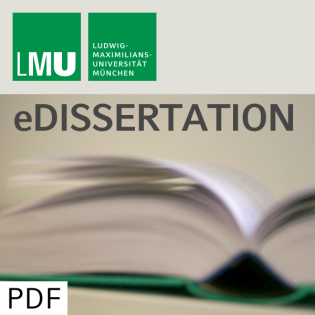
O(d,d) Target-space duality in string theory
Beschreibung
vor 10 Jahren
In this thesis various aspects of target-space duality in closed
bosonic string theory are studied. It begins by introducing
generalized geometry as the main mathematical framework. In analogy
to general relativity with the Riemannian metric as dynamical
quantity, a unified description for string backgrounds – Riemannian
metrics together with Kalb-Ramond two-form fields – is approached
via Courant algebroids on the generalized tangent bundle equipped
with a generalized metric. The dual background configuration, i.e.
a metric and a bivector field, is described by the generalized
cotangent bundle. The absence of a conventional curvature tensor
and consequently the problem of defining generalized gravity
theories on Courant algebroids is investigated in detail. This
leads to the introduction of Lie algebroids whose differential
geometry is suitable for the formulation of gravity theories.
Different such theories are shown to be interrelated by appropriate
homomorphisms. This proves to be useful for describing
non-geometric backgrounds. Target-space duality is introduced in
terms of O(d,d)-duality which identifies two-dimensional non-linear
sigma models for different string backgrounds as physically
equivalent under certain conditions: The backgrounds and
coordinates of the dual theories have to be related by certain O(d,
d) transformations. In particular, integrability conditions of the
dual coordinates are formulated in terms of Courant algebroids.
Apart from (non-abelian) T-duality, O(d,d)-duality contains the
novel Poisson-duality induced by Poisson structures. T- and
Poisson-duality are applied to the three-torus with constant H-flux
which shows the existence of non-geometric backgrounds. The latter
exceed conventional conceptions of geometry as they cannot be
described globally. The problem of describing non-geometric
backgrounds is approached with generalizes geometry. A unified
description of T-dual backgrounds is given in terms of proto-Lie
bialgebroids – one for the geometric sector and another for the
non-geometric one. They combine into a Courant algebroid whose
anomalous Jacobi identity provides conditions for the concurrent
appearance of dual fluxes. The absence of a gravity theory leads to
the restriction to Lie algebroids. Their gravity theories allow for
a global description of non-geometric backgrounds by an exact
prescription for the patching of these backgrounds. The description
extends to all possible supergravity theories. The question whether
a unified description of dual backgrounds is possible is
reconsidered in a manifestly T-duality invariant conformal field
theory approach. Dual coordinates are treated on equal footing.
Modular invariance of the one-loop partition function together with
the premise of physical intermediate states in four-tachyon
scattering inevitably leads to the appearance of the strong
constraint of double field theory on non-compact spaces. Toroidally
compactified directions do not require a constraint. This explains
the appearance of the strong constraint and justifies possible
attenuations.
bosonic string theory are studied. It begins by introducing
generalized geometry as the main mathematical framework. In analogy
to general relativity with the Riemannian metric as dynamical
quantity, a unified description for string backgrounds – Riemannian
metrics together with Kalb-Ramond two-form fields – is approached
via Courant algebroids on the generalized tangent bundle equipped
with a generalized metric. The dual background configuration, i.e.
a metric and a bivector field, is described by the generalized
cotangent bundle. The absence of a conventional curvature tensor
and consequently the problem of defining generalized gravity
theories on Courant algebroids is investigated in detail. This
leads to the introduction of Lie algebroids whose differential
geometry is suitable for the formulation of gravity theories.
Different such theories are shown to be interrelated by appropriate
homomorphisms. This proves to be useful for describing
non-geometric backgrounds. Target-space duality is introduced in
terms of O(d,d)-duality which identifies two-dimensional non-linear
sigma models for different string backgrounds as physically
equivalent under certain conditions: The backgrounds and
coordinates of the dual theories have to be related by certain O(d,
d) transformations. In particular, integrability conditions of the
dual coordinates are formulated in terms of Courant algebroids.
Apart from (non-abelian) T-duality, O(d,d)-duality contains the
novel Poisson-duality induced by Poisson structures. T- and
Poisson-duality are applied to the three-torus with constant H-flux
which shows the existence of non-geometric backgrounds. The latter
exceed conventional conceptions of geometry as they cannot be
described globally. The problem of describing non-geometric
backgrounds is approached with generalizes geometry. A unified
description of T-dual backgrounds is given in terms of proto-Lie
bialgebroids – one for the geometric sector and another for the
non-geometric one. They combine into a Courant algebroid whose
anomalous Jacobi identity provides conditions for the concurrent
appearance of dual fluxes. The absence of a gravity theory leads to
the restriction to Lie algebroids. Their gravity theories allow for
a global description of non-geometric backgrounds by an exact
prescription for the patching of these backgrounds. The description
extends to all possible supergravity theories. The question whether
a unified description of dual backgrounds is possible is
reconsidered in a manifestly T-duality invariant conformal field
theory approach. Dual coordinates are treated on equal footing.
Modular invariance of the one-loop partition function together with
the premise of physical intermediate states in four-tachyon
scattering inevitably leads to the appearance of the strong
constraint of double field theory on non-compact spaces. Toroidally
compactified directions do not require a constraint. This explains
the appearance of the strong constraint and justifies possible
attenuations.
Weitere Episoden

vor 8 Jahren

vor 8 Jahren







Kommentare (0)